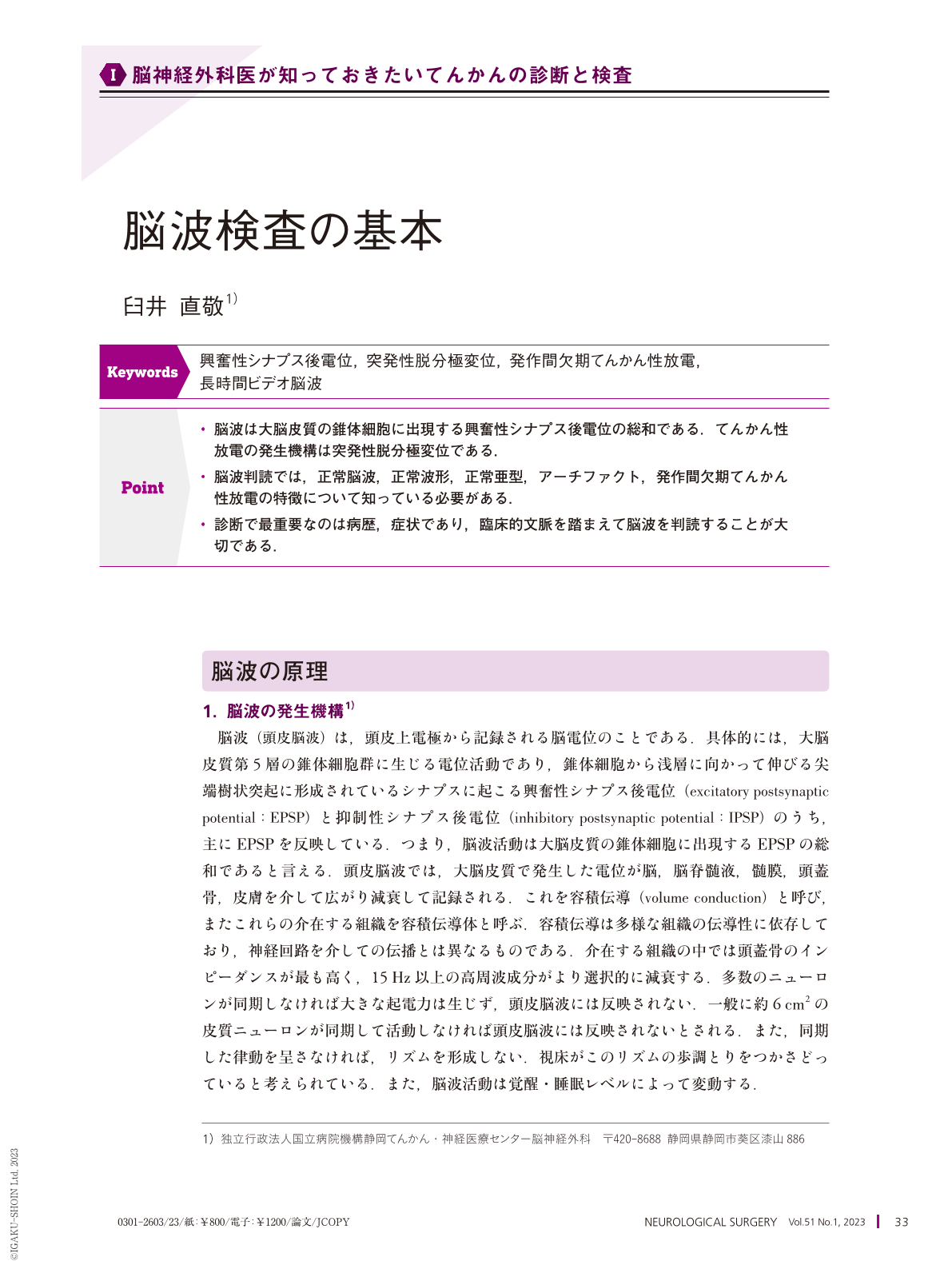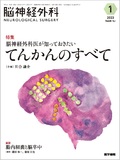Japanese
English
- 有料閲覧
- Abstract 文献概要
- 1ページ目 Look Inside
- 参考文献 Reference
Point
・脳波は大脳皮質の錐体細胞に出現する興奮性シナプス後電位の総和である.てんかん性放電の発生機構は突発性脱分極変位である.
・脳波判読では,正常脳波,正常波形,正常亜型,アーチファクト,発作間欠期てんかん性放電の特徴について知っている必要がある.
・診断で最重要なのは病歴,症状であり,臨床的文脈を踏まえて脳波を判読することが大切である.
Electroencephalogram(EEG)signals are mainly generated by postsynaptic potentials(EPSP)in the apical dendrites of pyramidal cells in the cortex. The mechanism of generation of interictal epileptiform discharges(IED)is paroxysmal depolarization shift(PDS). IEDs are negative towards the cortical surface and positive towards the white matter. To interpret EEG, readers should know normal EEG waveforms of wakefulness and sleep, normal variants such as wicket spikes or small sharp spikes, and artifacts such as eye movements or electromyography. Overinterpretation of EEG is a major cause of misdiagnosis; therefore, the accurate identification of IED is essential. The International Federation of Clinical Neurophysiology has proposed a criteria for the identification of IED. Long-term video-EEG is useful for correct diagnosis and localization of the epileptogenic zone in the setting of presurgical evaluation of intractable epilepsy and is also useful for the differential diagnosis of epileptic seizures and non-epileptic events. Clinical history and symptomatology are of utmost importance for correct diagnosis. Diagnosis should not be made using only EEG findings.

Copyright © 2023, Igaku-Shoin Ltd. All rights reserved.


